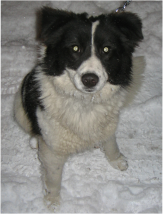
Copyright © 2013 CanineCancer.org.au All rights reserved.
There are a number of different types of tumours that are found in the intestines. Pathology testing must be undertaken to indicate which type of tumour is found. The correct treatment can only be administered in accordance with the tumour type, grading and staging.
The intestines comprise of three parts and tumours of the intestine can form on any part.
1. Small intestine -
2. Caecum / appendix -
3. Large intestine -
Adenocarcinoma is from the cells that line the intestine and is malignant. This is similar to ‘bowel cancer’ in people. They can begin as benign polyps.
Leiomyosarcoma is from the muscles that run within the intestine and is malignant. Can easily be confused with a gastrointestinal stromal tumour on standard biopsy.
Lymphoma is from white bloods cells that live in the wall of the intestine to detect and destroy invading bacteria.
Gastrointestinal stromal tumour is derived from cells that tell the intestinal muscle when to squeeze. These are easily confused with leiomyosarcomas. Of importance their growth is controlled by a gene called c-
Mast Cell Tumours are rare
Plasma cell tumour is rare




The most common types of tumours found in the eye include melanoma and lymphoma. Tumours found on the eyelids are like tumours found elsewhere on the skin. Pathology testing must be undertaken to indicate which type of tumour is found. The correct treatment can only be administered in accordance with the tumour type, grading and staging.
Melanoma A benign tumour is known as melanocytoma. A malignant tumour is known as a malignant melanoma or melanosarcoma. Melanomas originate in the cells called melanocytes which produce a pigment called melanin. When a melanoma is found in the eye their location in the eye is important:
1. Limbal melanomas look like a black growth in front of the eye growing from the sclera (white part of the eyeball) or conjunctiva (the pink tissue between the eyelid and eyeball) and are usually benign. They don’t all need treatment.
2. Uveal melanomas grow from inside the eyeball. They will eventually destroy the eye but typically don’t spread through the body.
3. Choroidal melanomas grow from deeper inside the eyeball but behave in a similar way to the uveal melanomas.
Lymphoma: Most dogs with lymphoma in the eyes will have obvious evidence of it elsewhere – usually large lymph nodes at the back of the lower jaw, the front of the shoulders, behind the knees (stifles) and elsewhere. It is an immune system tumour best treated medically (not surgically).
The two most common types of tumours found on the heart are haemangiosarcoma and heart based tumours. Pathology testing must be undertaken to indicate which type of tumour is found. The correct treatment can only be administered in accordance with the tumour type, grading and staging.
Haemangiosarcoma originates in the cells that line blood vessels. This disease is aggressive, routinely has spread elsewhere before diagnosis and gives little warning. Some dogs will die from the tumour bleeding into the sac that that the heart sits in, squashing the heart and stopping it from working.
Heart base tumours are most common in dogs with very short noses such as boxers and Boston terriers. The tumours are benign in that they are slow growing and don’t spread.
There are many types of tumours that grow inside the chest. Some grow within the lungs or the heart or involve lymph nodes and are discussed in other parts of this site. Two other types of tumour are mesothelioma and thymoma. Pathology testing must be undertaken to indicate which type of tumour is found. The correct treatment can only be administered in accordance with the tumour type, grading and staging.
Mesothelioma is malignant. It can be caused by asbestos fibres but rarely can also happen by itself. It can be lumps on the inside of the chest wall, or more commonly a severe thickening of the inside of the chest wall. It often leaks fluid which fills up the chest and makes breathing difficult. It is often difficult to get a certain diagnosis.
For more detailed information, click here.
Thymoma is a benign growth in the front of the chest wall. It does not spread throughout the body, but it does take up space making breathing difficult. It is often difficult to get a diagnosis.
See a surgical video of a Thymoma removal



